| Photo of the month – September 2023 |
[German version] |
Wire rod coils like organ pipes
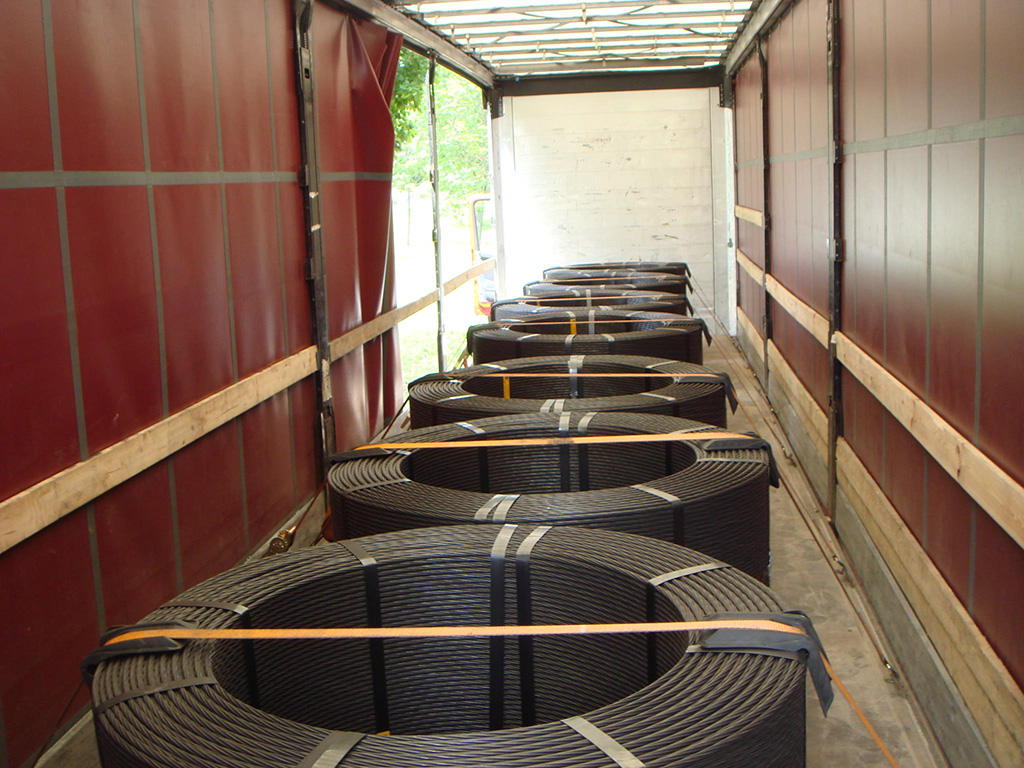
Figure 1 [Karl-Heinz Pachoinig]
Figure 1 shows a complete load of wire rod coils. They have been neatly gathered into coils using steel straps and carefully lashed down because the loaders clearly assumed that they might fly straight up into the air.
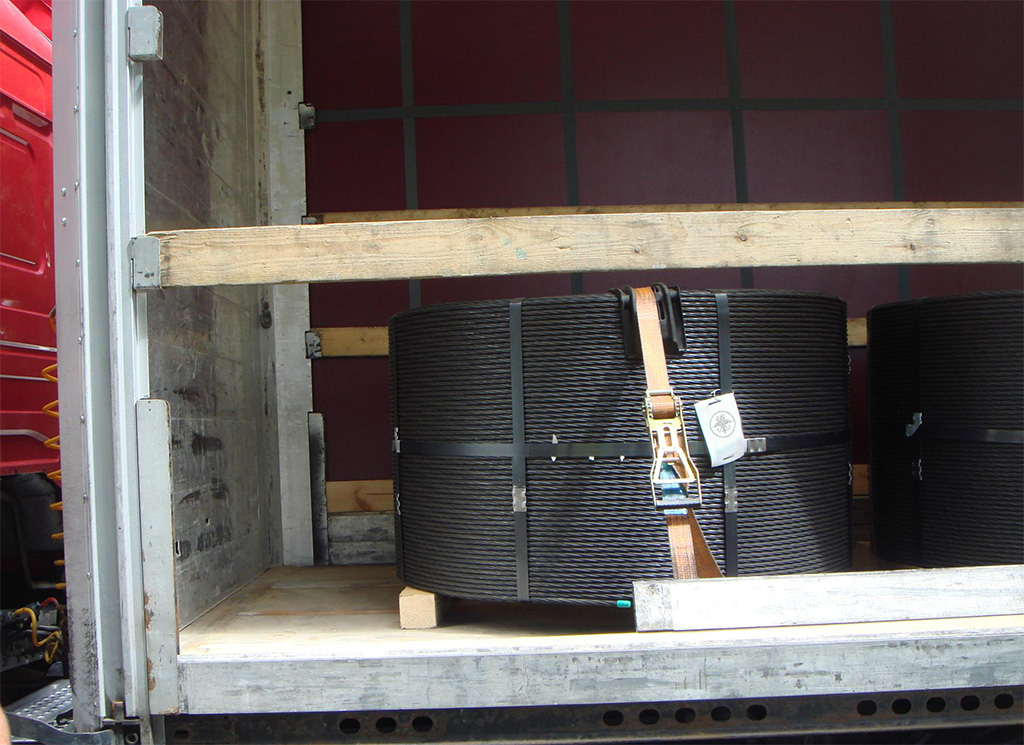
Figure 2 [Karl-Heinz Pachoinig]
There was no tight fit to the end wall. The loaders were obviously satisfied with the friction and the tie-down lashing.
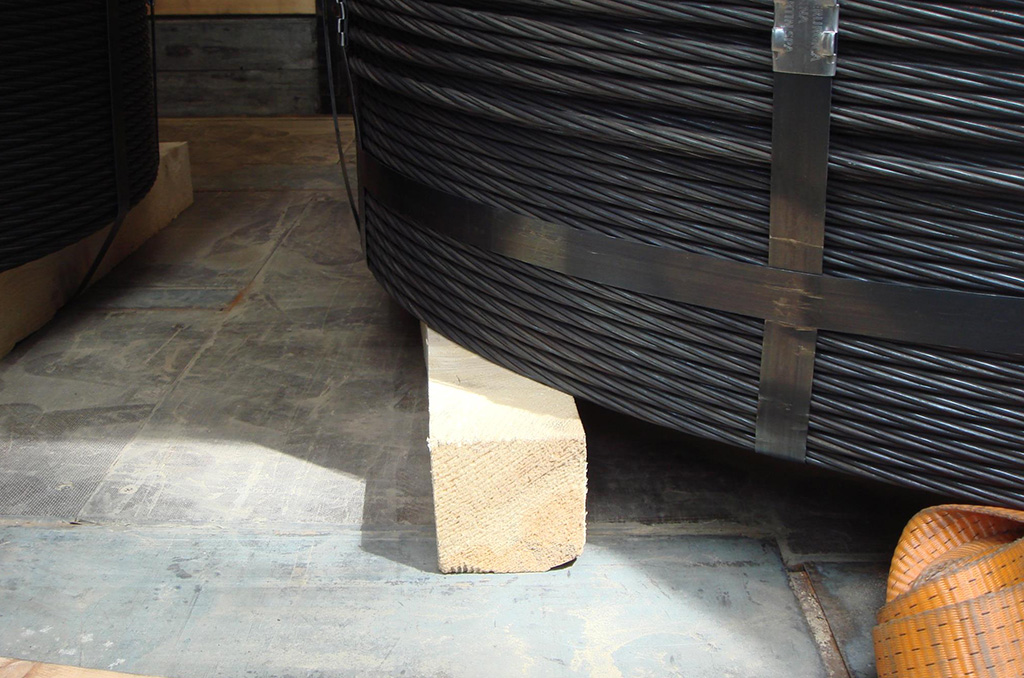
Figure 3 [Karl-Heinz Pachoinig]
In this photo, we can see that the friction is generated by rough-sawn lumber against well-used textured coated board with small pieces of steel. We therefore assume a coefficient of friction of μ = 0.3.
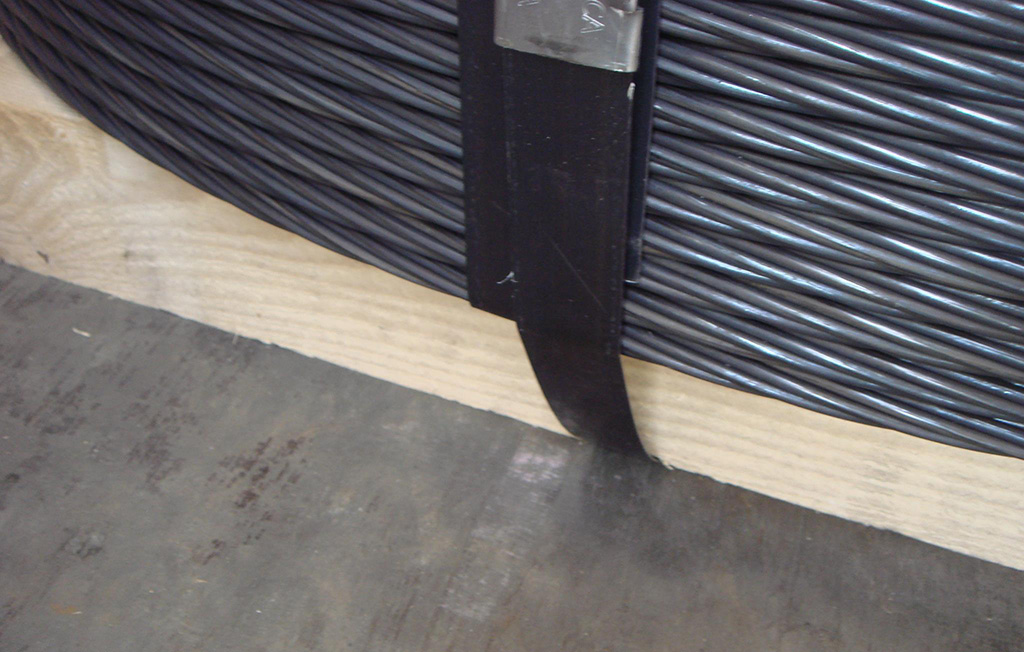
Figure 4 [Karl-Heinz Pachoinig]
It is a shame that there was no groove present for the steel straps. We now simply have to calculate the applied load securing force: We will assume that the load consisted of 10 coils, each with a weight of 2.4 tonnes. At a coefficient of friction μ of 0.3, a securing force of 1,200 daN per coil is still required. The securing method used consisted of time-down lashings with long-lever ratchet handles. Edge protectors were used throughout, meaning that we can double the 500-daN of pretensioning force. At 60°, the lashing angle was also good, meaning that we do not need to make any deductions. The securing force achieved by each lashing belt amounted to 300 daN. This means that 900 daN of securing force was still missing.
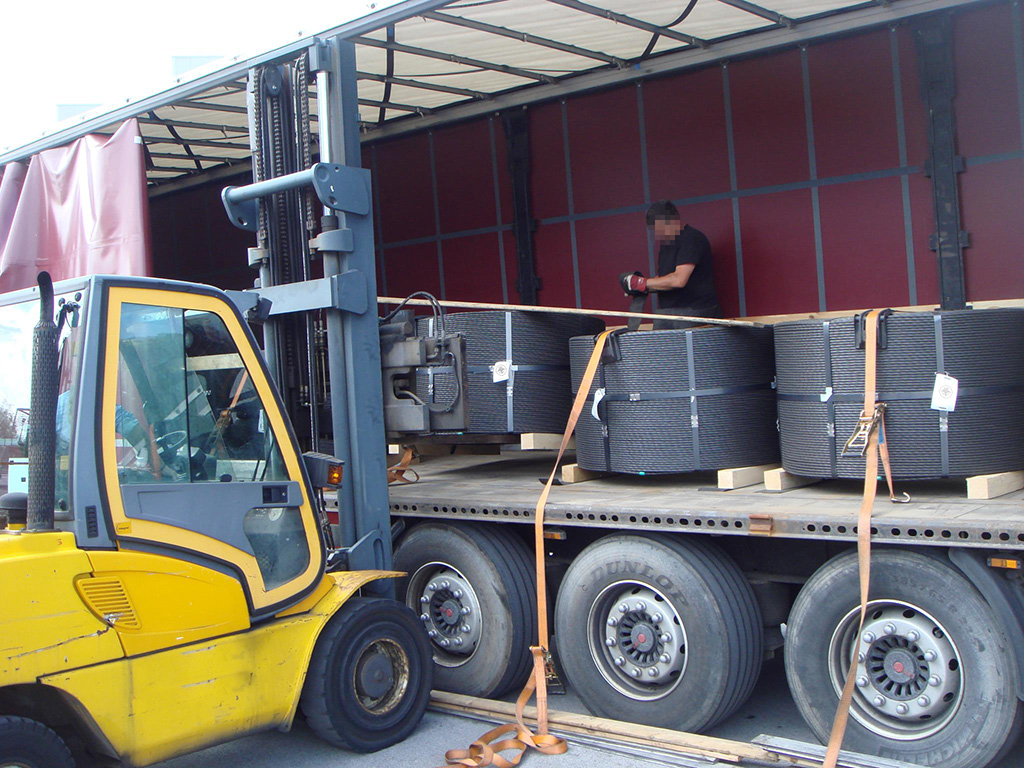
Figure 5 [Karl-Heinz Pachoinig]
How could we do things better?
The way the load is secured could be improved by placing anti-slip material under it. There was no tight fit to the front because load distribution issues made this problematic. Because we can now assume a coefficient of friction of μ = 0.6, the missing securing force is equal to 480 daN per coil. This can be applied by means of a tie-down lashing – even though we do not find this solution particularly reassuring because the coils could twist out of the lashings. However, that is why there is the rule that individual load items must be secured using at least two tie-down lashings.
Because we are committed to safety, we would secure each coil with a loop lashing on either side.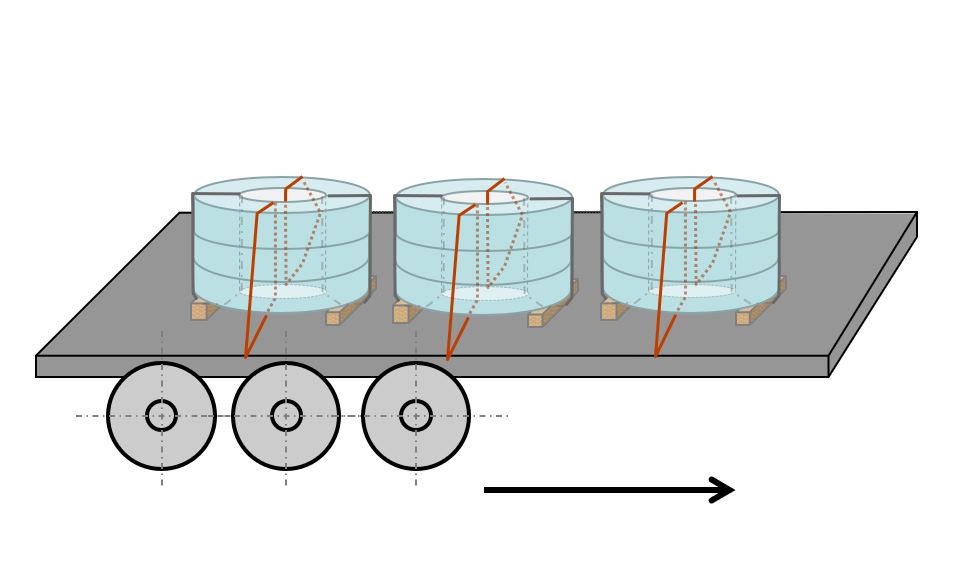
Diagram 1 [Photo of the Month]
A direct lashing is something very precise and we still benefit from the friction. The coils can therefore no longer break free and they are held securely in their place even if the driver has to brake hard . What is more, we no longer have to worry about the tight fit because the friction acts equally in all directions.
Your load securing columnists wish you a safe and secure journey through September!.
Back to beginning
